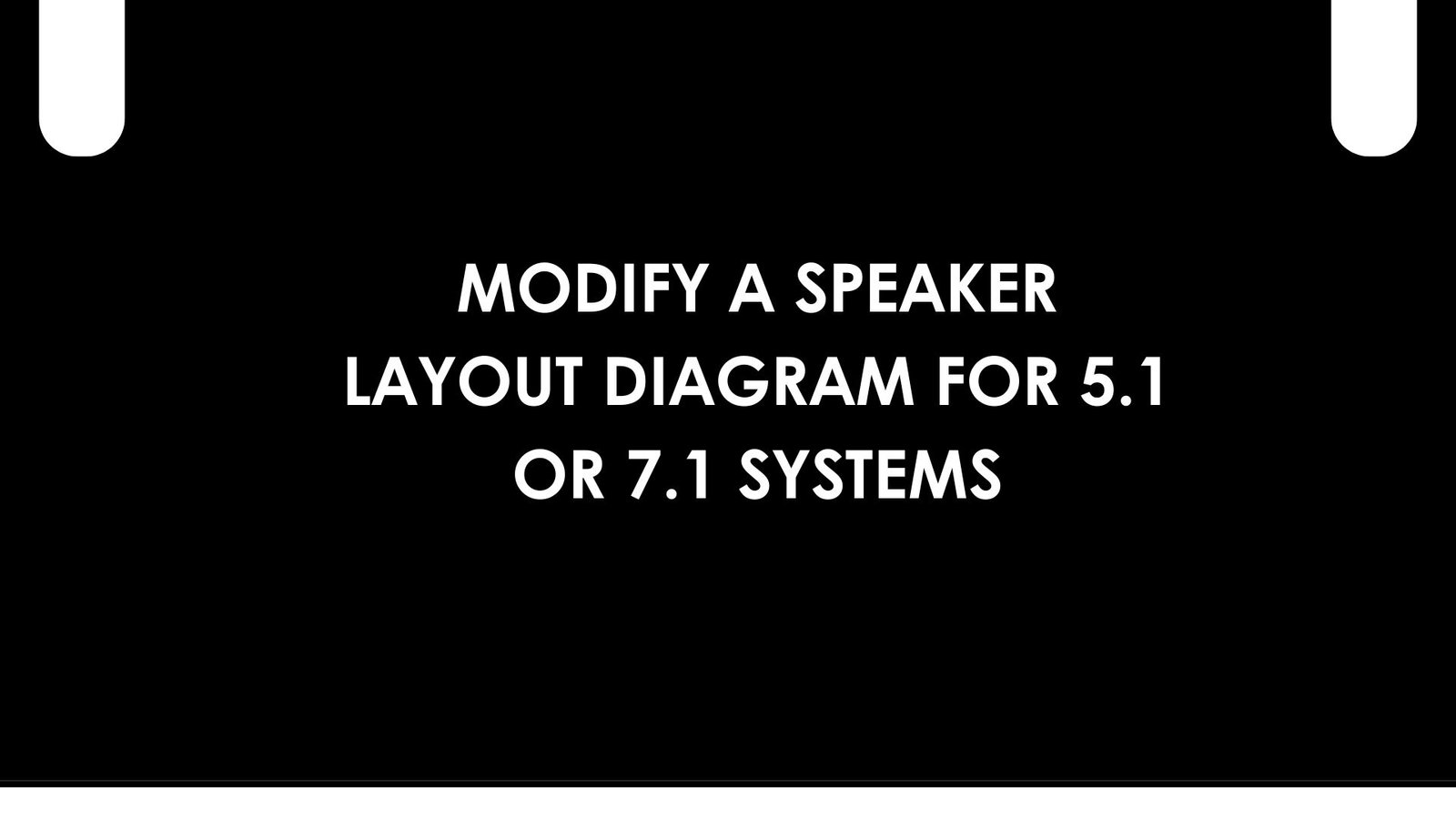Home theaters have become more sophisticated over the years, and one of the key elements of an immersive experience is the speaker layout. Whether you are designing a 5.1 system for a compact room or upgrading to a 7.1 setup for a larger space, having an accurate speaker layout diagram is essential for proper sound distribution and system performance.
A speaker layout diagram helps you visualize speaker positions, wiring paths, and the spatial relationship between audio sources and the listening area. The more precise your layout, the more immersive your surround sound will be.
With XTEN-AV, modifying and customizing speaker layout diagrams for 5.1 or 7.1 systems is easy, accurate, and efficient. XTEN-AV gives integrators, installers, and home theater enthusiasts the tools to create smart, scalable AV designs with drag-and-drop simplicity.
In this blog, we will walk through how to modify a speaker layout diagram for both 5.1 and 7.1 systems and ensure your setup delivers the best audio experience possible.
What Is a 5.1 and 7.1 System?
Before we dive into diagram modifications, let us briefly review what these systems include.
5.1 Surround Sound consists of:
- 3 front speakers (Left, Center, Right)
- 2 surround speakers (Left Surround, Right Surround)
- 1 subwoofer (.1 for low-frequency effects)
7.1 Surround Sound builds on this by adding:
- 2 additional rear surround speakers (Left Rear Surround, Right Rear Surround)
The goal of both setups is to create a sound field that surrounds the listener, enhancing realism for movies, games, and music.
Step 1: Start with the Right Room Dimensions
The first step in modifying your layout is understanding the room. Measure:
- Length and width of the space
- Ceiling height
- Position of furniture, especially seating
- Walls, doors, and obstacles that affect speaker placement
With XTEN-AV, you can enter real-world dimensions to scale your room. This makes sure your speaker placements are accurate when overlaid on your design diagram.
Step 2: Load or Create a Speaker Layout Diagram in XTEN-AV
Once your room is set up in XTEN-AV, you can:
- Import an existing speaker layout if you already have one
- Use a template provided by XTEN-AV
- Start from scratch with the room layout and manually add speaker positions
XTEN-AV lets you drag and drop each speaker type into place and shows directional coverage for better visualization.
Step 3: Modify for 5.1 Speaker Layout
If you are working on a 5.1 setup, position your speakers as follows:
- Center speaker: Directly in front of the listener, below or above the display
- Left and Right front speakers: Equidistant from the center speaker at ear level
- Left and Right surround speakers: Slightly behind and to the sides of the seating area
- Subwoofer: Can be placed near the front wall or in a corner for best bass response
In XTEN-AV, you can label each speaker, set height levels, and even run signal lines from the AV receiver to each speaker location. This makes wiring planning easier and clearer.
Step 4: Modify for 7.1 Speaker Layout
To upgrade to a 7.1 layout, you will need to add:
- Left Rear Surround speaker
- Right Rear Surround speaker
These are typically placed directly behind the listener at ear level. The side surround speakers move slightly forward compared to a 5.1 layout, creating a wider surround sound field.
With XTEN-AV, simply:
- Drag in the two additional rear speakers
- Adjust spacing based on room dimensions
- Update cable runs from your receiver to the new speakers
- Regenerate the cable schedule for the new layout
You can also include labels or notes to identify which channels go where, which is helpful for installers and homeowners.
Step 5: Adjust Wiring and Connection Paths
Once speaker positions are updated, the next step is to plan the wiring:
- Use XTEN-AV to draw cable lines from the AV receiver to each speaker
- Include cable types such as 14 AWG or 16 AWG speaker wire
- Mark routing paths along walls or through conduit where necessary
- Label each cable with a unique ID to match your speaker diagram
This ensures the installer knows exactly which wire goes to which speaker and how long each cable needs to be.
Step 6: Optimize Speaker Placement for Performance
In some rooms, perfect placement may not be possible due to furniture, wall constraints, or aesthetics. XTEN-AV lets you test multiple configurations quickly:
- Shift speaker positions slightly and see how it affects coverage
- Add notes for ceiling or wall mounting options
- Simulate seating area coverage using acoustic projection tools
- Experiment with toe-in angles for front speakers to optimize sound focus
This level of visual flexibility means your final diagram will not only be accurate but performance-optimized too.
Step 7: Export and Share the Final Layout
Once your 5.1 or 7.1 speaker layout is complete in XTEN-AV:
- Export it as a PDF or image
- Include speaker IDs, wiring paths, and cable schedule
- Share it with installers, builders, or the client
- Use the layout as a reference during physical installation
XTEN-AV ensures all your documentation stays consistent and easy to understand across the project lifecycle.
Final Tips for Speaker Layout Diagrams
- Always position speakers at ear height for seated listeners
- Leave space between speakers and walls for better sound quality
- Do not block speaker paths with furniture or décor
- If using in-ceiling or on-wall speakers, clearly mark mounting types
- Keep the layout clean and avoid overlapping labels or wires
Read more: https://enhanceyourwebsites.com/how-to-visualize-and-edit-your-rack-wiring-setup/
Conclusion
Modifying a speaker layout diagram for 5.1 or 7.1 systems does not have to be complicated. With a clear strategy and a smart design tool like XTEN-AV, you can easily adjust placements, wiring, and labels to fit any room size or speaker configuration.
Whether you are designing a cozy media room or a large-scale home cinema, XTEN-AV helps you create a speaker layout diagram that is both technically accurate and installation-ready.
Use XTEN-AV to visualize your surround sound setup with precision and deliver a truly immersive audio experience for every project.












Leave a Reply